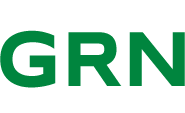Eavor's Chief Technology Officer, Matt Toews, was happy to chat with Alexander C. Kaufman for this story about one of the company's latest technology developments, our Eavor-Link Active Magnetic Ranging (AMR) system:
Geothermal energy used to be confined to locations with unique underground reservoirs of hot water, such as California or Iceland. Not anymore. A new generation of startups is now using the oil and gas industry's latest drilling technologies to tap into the Earth's molten heat to generate power in far more places than ever before. But drilling holes in the ground remains an expensive upfront cost, without the same kind of guaranteed payday from hitting a hydrocarbon reserve.
For Eavor Technologies, it's not just about drilling down. The Calgary-based company's systems work on a loop that requires boring two parallel holes at once that ultimately intersect deep underground in hot bedrock - far out of range of GPS or electromagnetic signals that could help engineers on the surface precisely steer the drilling equipment.
To get around this, Eavor helped design its own in-house drilling tool that allows the equipment boring each hole to communicate through magnetic signals while digging nearly as deep as 20 times the height of the Empire State Building. Until now, the company - which is building its debut project in Germany - had been slowly rolling out its drilling tool while still relying on traditional technology to dig the 48 separate underground loops per facility.
In a critical milestone, Eavor has completely switched over to its drilling technology as of Wednesday, this newsletter can exclusively report.
"In drilling, time is money. All the drilling equipment costs on an hourly basis," Matthew Toews, Eavor's chief technology officer, told me on a call. "This saves upward of 120 hours per multilateral. To put that in perspective, we have 12 multilateral pairs per Eavor Loop. That adds up quickly, there are four Eavor Loops per pad - so, 48 loops." Put in money terms, Toews said, "It's saving tens of millions of dollars per project."
The article originally appeared in Kaufman's newsletter, Field Notes, in May 2025. You can find the full story here.









